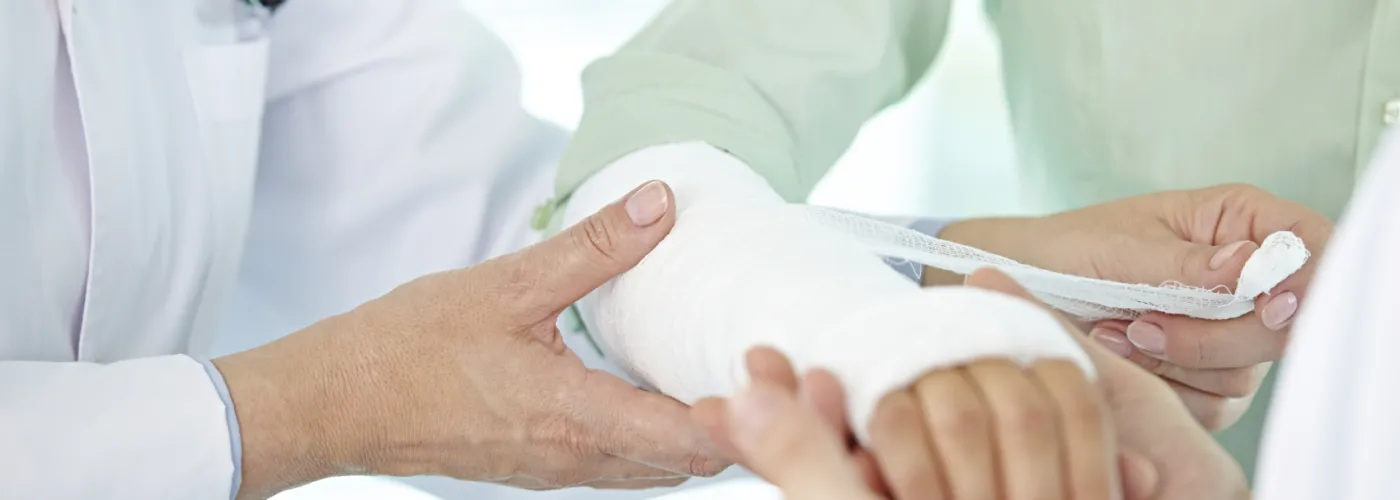
Plantar Fascitis (Heel Spurs)

Plantar fascitis is a common foot problem in sports participants. It starts as a dull intermittent pain in the heel which may progress to a sharp persistent pain. Classically, it is worse in the morning with the first few steps or at the beginning of sporting activity.
The plantar fascia is a thick fibrous material on the bottom of the foot. It is attached to the heel bone (calcaneus) and fans forward toward the toes. It is responsible for maintaining the arch of the foot.
The problem usually occurs when part of this inflexible fascia is pulled away from the heel bone. This causes an inflammation and thus pain. Plantar fascia injuries may occur at the midsole or towards the toes. Since it is difficult to rest the foot, a vicious cycle is set up with the situation aggravated with every step. In severe cases, the heel is visibly swollen. The problem progresses rapidly and treatment must be started as soon as possible.
As the fascia is pulled away from the bone, the body reacts by filling in the space with new bone. This causes the classic "heel spur." This heel spur itself is a secondary X-ray finding and is not the problem, but a result of the problem.
Predisposing Factors
- Flat pronated feet
- High arched rigid feet
- Inappropriate or improper shoes
- Toe running, hill running
- Soft terrain (i.e. running in the sand)
- Increasing age
Treatment
- Arch Supports - These are custom made from molds taken of your feet.
- Rest - Use pain as your guide. If your foot is too painful, weight-bearing sports can be temporarily replaced by swimming and/or cycling to maintain cardiovascular fitness. Weight training can be used to maintain leg strength.
- Ice - Icing your heel (frozen peas) for 15 minutes several times a day will reduce inflammation. You should also ice your heel after activity for 15 minutes.
Medication
A physician may on rare occasions prescribe anti-inflammatory pills. These are important in reducing the inflammation in your foot.
Physiotherapy
The initial objective of physiotherapy (when needed) is to decrease the inflammation. Later the small muscles of the foot will be strengthened to support the weakened plantar fascia.
Cortisone
A cortisone injection is usually quite beneficial if the above have not solved the problem. It is a local injection and it is very safe in this area.
Surgery
Surgery is occasionally required for plantar fascitis. The tension on the plantar fascia is released, and the spur may be excised.
Risks
Risks include skin breakdown, infection, slow healing, nerve or blood vessel damage, blood clots, and other complications. Discuss these with our team prior to your surgery and make sure you understand them.
Sports
Plantar fascitis can be aggravated by all weight-bearing sports. Repetitive foot landing, such as occurs in running and jogging, will aggravate the problem. When the problem is severe the best sports are ones which are non-weight-bearing (i.e. swimming, cycling). Go back into other sports slowly. If you have a lot of pain either during the activity or following morning, you are doing too much.
Shoes
It is possible for shoes to cause the problem. You may need different or new shoes. A knowledgeable salesperson can be invaluable.
Exercise
The following exercises are designed to strengthen the small muscles of the foot to help support the damaged area. If performed regularly, they will help prevent re-injury.
Towel Curls
Place a towel on the floor. Curl the towel toward you, using only the toes of your injured foot. Resistance can be increased with a weight on the end of the towel. Repeat 20 times.
Shin Curls
Run your foot slowly up and down the shin of your other leg as you try to grab the shin with your toes. Repeat 30 times. A similar exercise can be done by curling your toes around a tin can.
Toe Grabs
Stand feet together. Rotate your knees outward while attempting to grab the floor with your toes using the muscles of your foot. Hold 10 seconds, then relax. Repeat 20 times.
Stretches
Lean against a wall with your back knee locked. Press forward until a stretch is felt in your calf muscle. Hold for 15 seconds.
Then bend your knee until a stretch is felt in your Achilles tendon. Hold a further 15 seconds. Repeat 3 times. You should feel a pull in your muscle and tendon, but no pain.